
Trujillo: The City of Eternal Spring
Discover Trujillo, Peru's City of Eternal Spring, where ancient civilizations, colonial charm, and vibrant culture come together in a stunning coastal setting.
Located on the northwest coast of Peru, Trujillo is a vibrant city rich in history, culture, and natural beauty. Known as the 'City of Eternal Spring' for its pleasant climate, Trujillo offers a unique blend of colonial architecture, ancient ruins, and modern amenities that make it a must-visit destination for travelers. One of the highlights of Trujillo is the nearby archaeological site of Chan Chan, the largest adobe city in the world. This UNESCO World Heritage site was once the capital of the Chimu civilization and offers a fascinating glimpse into pre-Columbian history. Another significant site is the Sun and Moon Temples (Huacas del Sol y de la Luna), which showcase the engineering prowess and artistic skills of the Moche civilization. The city itself is a delight to explore, with its well-preserved colonial buildings, bustling markets, and lively plazas. The Main Square (Plaza de Armas) is the heart of Trujillo, surrounded by beautiful structures like the Trujillo Cathedral and the Archbishop's Palace. Don't miss a stroll down Pizarro Street, where you can find charming cafes, local shops, and vibrant street art. Trujillo is also famous for its cultural festivals. The Marinera Festival, held every January, celebrates Peru's national dance with colorful parades and dance competitions. The International Spring Festival, celebrated in September, features flower shows, beauty pageants, and traditional music and dance performances. For nature enthusiasts, the nearby beaches of Huanchaco offer excellent surfing opportunities and a chance to see the traditional reed boats known as 'caballitos de totora.' The Chicama Beach, located a bit further north, is famous for having the longest left-hand wave in the world, attracting surfers from all over the globe.
Local tips in Trujillo
- Visit early: To avoid crowds, visit the archaeological sites of Chan Chan and the Sun and Moon Temples early in the morning.
- Dress in layers: The weather in Trujillo is generally mild, but temperatures can vary throughout the day. Dressing in layers will keep you comfortable.
- Local currency: Make sure to carry some Peruvian soles for small purchases, as not all places accept credit cards.
- Try ceviche: Don't miss trying the local ceviche, a delicious seafood dish that Trujillo is famous for.
- Public transport: Use local buses or taxis to get around the city. They are affordable and convenient.
Neighbourhoods in Trujillo
Trujillo: The City of Eternal Spring
Located on the northwest coast of Peru, Trujillo is a vibrant city rich in history, culture, and natural beauty. Known as the 'City of Eternal Spring' for its pleasant climate, Trujillo offers a unique blend of colonial architecture, ancient ruins, and modern amenities that make it a must-visit destination for travelers. One of the highlights of Trujillo is the nearby archaeological site of Chan Chan, the largest adobe city in the world. This UNESCO World Heritage site was once the capital of the Chimu civilization and offers a fascinating glimpse into pre-Columbian history. Another significant site is the Sun and Moon Temples (Huacas del Sol y de la Luna), which showcase the engineering prowess and artistic skills of the Moche civilization. The city itself is a delight to explore, with its well-preserved colonial buildings, bustling markets, and lively plazas. The Main Square (Plaza de Armas) is the heart of Trujillo, surrounded by beautiful structures like the Trujillo Cathedral and the Archbishop's Palace. Don't miss a stroll down Pizarro Street, where you can find charming cafes, local shops, and vibrant street art. Trujillo is also famous for its cultural festivals. The Marinera Festival, held every January, celebrates Peru's national dance with colorful parades and dance competitions. The International Spring Festival, celebrated in September, features flower shows, beauty pageants, and traditional music and dance performances. For nature enthusiasts, the nearby beaches of Huanchaco offer excellent surfing opportunities and a chance to see the traditional reed boats known as 'caballitos de totora.' The Chicama Beach, located a bit further north, is famous for having the longest left-hand wave in the world, attracting surfers from all over the globe.
When is the best time to go to Trujillo?
Iconic landmarks you can’t miss
Plaza de Armas of Trujillo
Experience the vibrant culture and historical beauty of Plaza de Armas in Trujillo, a must-visit destination for every traveler.
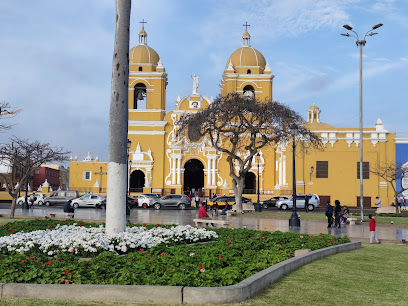
Plazuela El Recreo
Discover the serene beauty of Plazuela El Recreo, a tranquil park in Trujillo perfect for relaxation and cultural exploration amidst lush greenery.
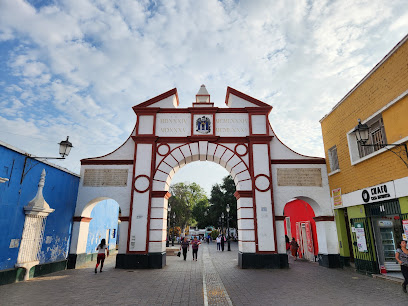
Chan Chan
Uncover the ancient wonders of Chan Chan, the largest adobe city in the world, and immerse yourself in the rich history of the Chimu civilization.
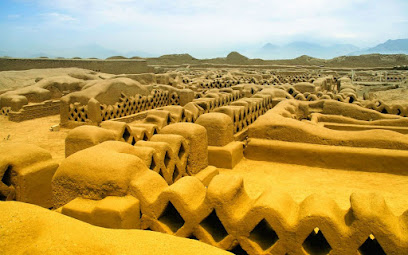
La Huaca de la Luna
Explore the ancient wonders of La Huaca de la Luna, a significant archaeological site that unveils the mysteries of the Moche civilization in Peru.
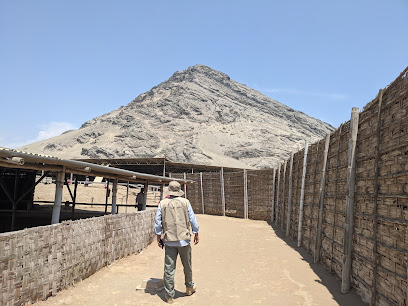
Chan Chan Site Museum
Explore the Chan Chan Site Museum in Huanchaco, where the ancient Chimu civilization comes to life through captivating artifacts and exhibits.
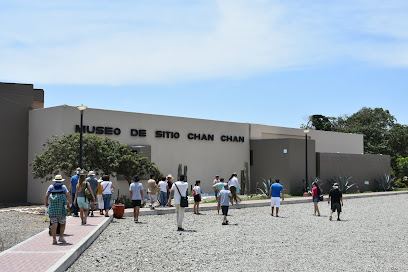
Archeological complex El Brujo
Explore the El Brujo Archaeological Complex, an ancient Moche site rich in history, art, and culture, just north of Trujillo, Peru.
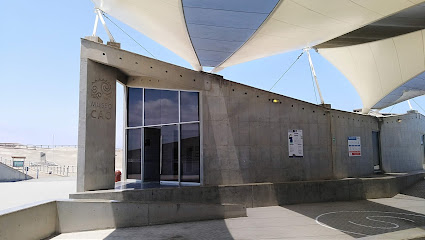
La Huaca del Sol
Discover the ancient wonders of La Huaca del Sol, a monumental pyramid revealing the rich history of the Moche civilization in Peru's Valle de Moche.
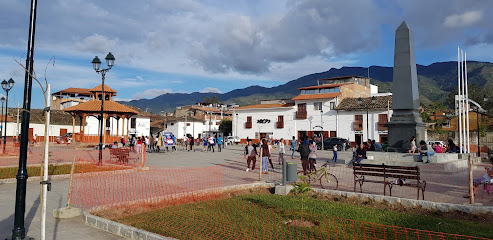
Trujillo Toy Museum
Discover the enchanting Trujillo Toy Museum, where nostalgia meets culture in a delightful setting for families and toy lovers.
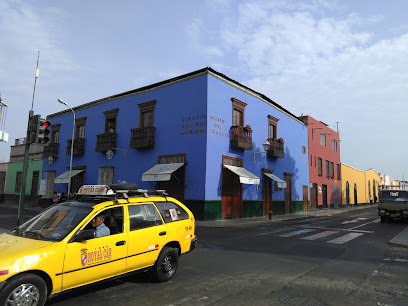
Museo Huacas de Moche
Explore the ancient wonders of the Moche civilization at Museo Huacas de Moche, where history comes alive through remarkable artifacts and exhibits.
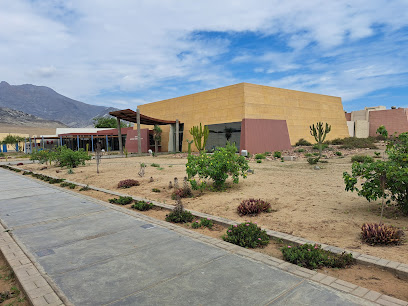
Trujillo Cathedral Basilica
Discover the stunning beauty and rich history of Trujillo Cathedral Basilica, a must-visit landmark in Peru's cultural heart.
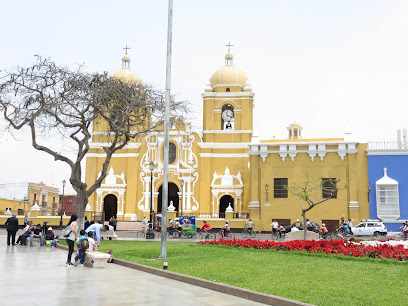
Trujillo Peru Temple
Discover the tranquility and architectural beauty of the Trujillo Peru Temple, a serene oasis for worship and reflection in the heart of Trujillo.

Juan Valdez Trujillo
Experience the authentic taste of Colombia at Juan Valdez Café in Trujillo, where exceptional coffee meets a cozy ambiance.
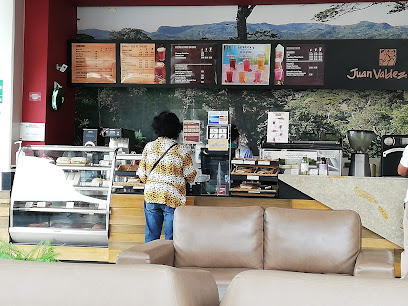
Old Wall Trujillo
Explore the historic Old Wall of Trujillo, a captivating landmark that tells the story of Peru's colonial past amidst vibrant culture and stunning architecture.
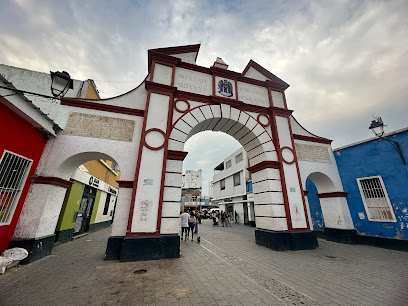
Casa Urquiaga
Discover the cultural richness of Trujillo at Casa Urquiaga, a museum that showcases Peru's vibrant history and heritage.
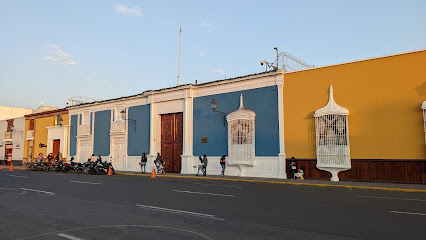
Museo Jardín de Los Sentidos
Discover the enchanting Museo Jardín de Los Sentidos in Trujillo, where art meets nature in a serene botanical garden experience.
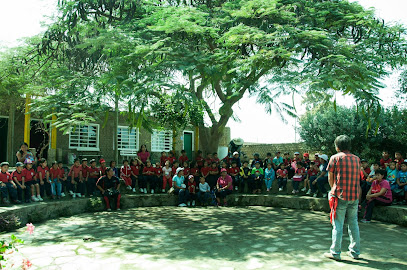
Unmissable attractions to see
Plaza de Armas of Trujillo
Explore the vibrant Plaza de Armas in Trujillo, a historical landmark with stunning colonial architecture and rich cultural experiences.
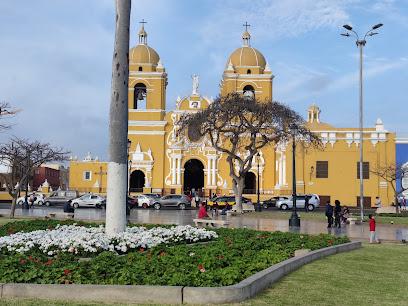
Plazuela El Recreo
Explore the beauty and culture of Trujillo at Plazuela El Recreo, a green oasis filled with history and vibrant local life.
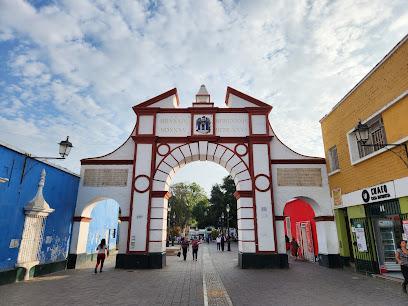
Playa Varadero - Huanchaco
Discover the beauty of Playa Varadero in Huanchaco, a stunning beach destination perfect for surfers, sunbathers, and culinary enthusiasts.
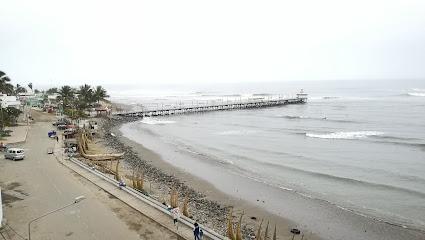
Chan Chan Site Museum
Discover the rich heritage of the Chimú civilization at the Chan Chan Site Museum in Huanchaco, a UNESCO World Heritage site showcasing ancient wonders.
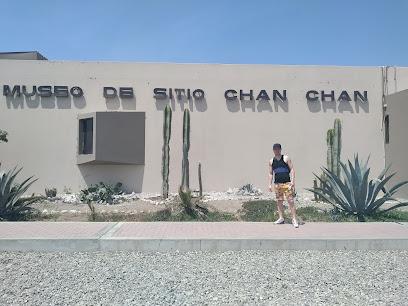
Archeological complex El Brujo
Unravel the secrets of the ancient Moche civilization at El Brujo, a captivating archaeological complex near Trujillo, Peru.

La Huaca del Sol
Explore the ancient marvel of Huaca del Sol in Valle de Moche, a UNESCO World Heritage site revealing the secrets of the Moche civilization.
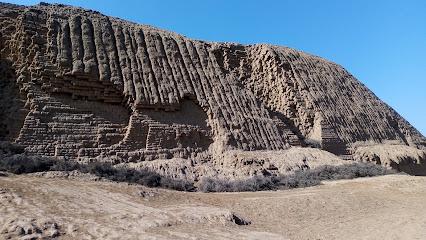
Huaca El Dragon, Complejo Arqueológico Chan-Chan
Explore Huaca El Dragon in La Esperanza, a stunning archaeological site revealing the history and culture of ancient Peru through its impressive ruins and landscapes.
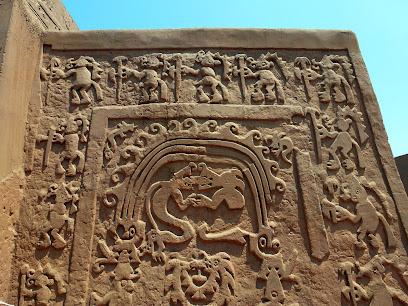
Trujillo Toy Museum
Explore the enchanting Trujillo Toy Museum, where nostalgia meets culture in a captivating collection of toys from around the world.
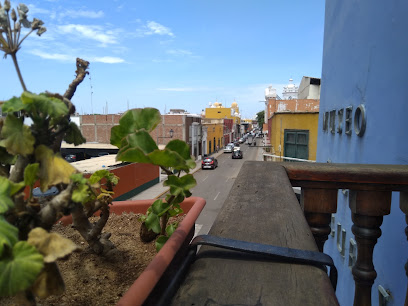
Playa Salaverry
Discover the serene beauty of Playa Salaverry, a pristine beach in Peru perfect for relaxation and water sports amidst stunning coastal views.
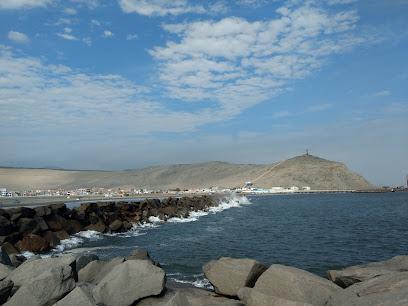
Archeology Museum UNT
Explore the rich archaeological heritage of Peru at the Archeology Museum UNT in Trujillo, showcasing artifacts from ancient civilizations.
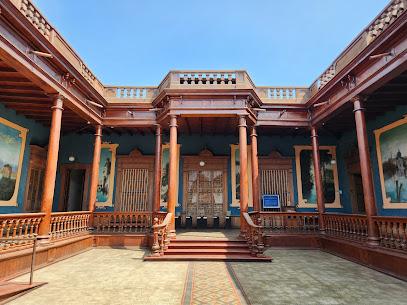
Trujillo Peru Temple
Discover spiritual tranquility and architectural beauty at the stunning Trujillo Peru Temple, a serene religious landmark in the heart of Trujillo.
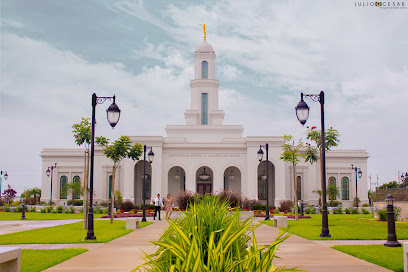
Playa Las Delicias
Experience the tranquility and vibrant culture of Playa Las Delicias, a must-visit beach destination in Moche, Peru.
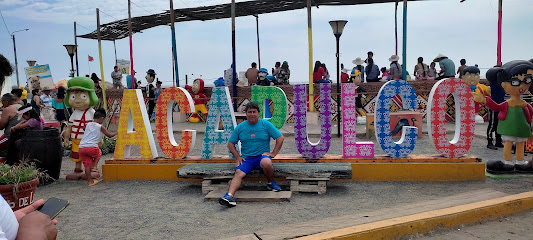
Club Central de Trujillo
Discover the heart of Trujillo at Club Central de Trujillo, where culture, music, and local flavor come together for an unforgettable experience.
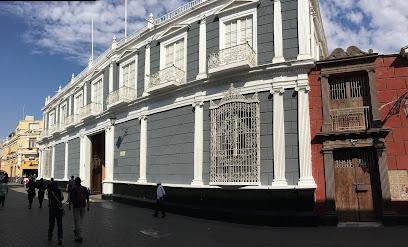
Carmen Monastery
Discover the rich history and serene beauty of Carmen Monastery in Trujillo, a must-visit cultural gem that showcases exquisite Baroque architecture.
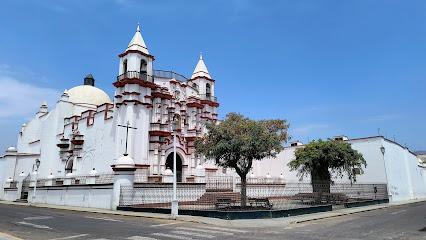
Iglesia La Merced
Explore the historical charm and architectural beauty of Iglesia La Merced, a must-see Catholic church in the heart of Trujillo, Peru.
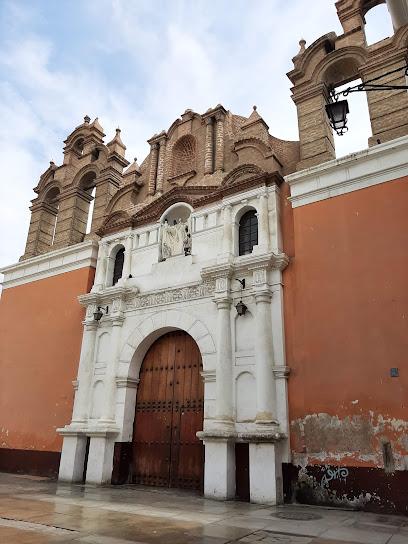
Essential places to dine
El Rincón de Vallejo
Experience authentic Peruvian cuisine at El Rincón de Vallejo in Trujillo – where tradition meets flavor in every dish.
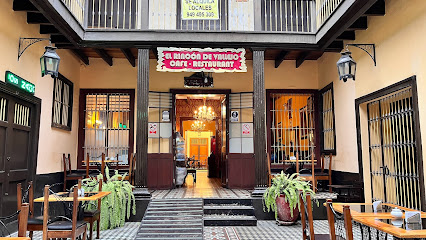
Restaurant Turístico El Sombrero
Experience authentic Peruvian cuisine at Restaurant Turístico El Sombrero in Trujillo, where every dish tells a story of tradition and flavor.
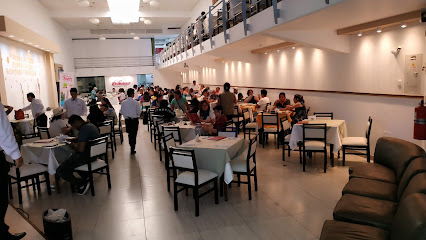
Restaurant Romano Rincón Criollo
Discover authentic Peruvian cuisine at Restaurant Romano Rincón Criollo in Trujillo - where every dish tells a story.
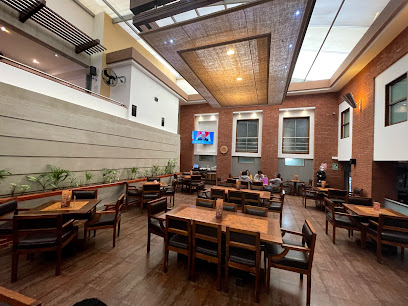
Restaurant Squalos
Discover exquisite seafood at Restaurant Squalos in Trujillo – where fresh flavors meet vibrant Peruvian culture.

Cebicheria Morena de Oro
Discover the authentic taste of Peru at Cebicheria Morena de Oro, where fresh seafood meets vibrant flavors in a cozy setting.
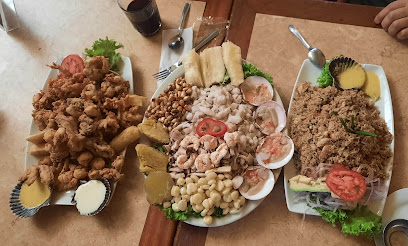
Coco Torete - Real Plaza
Experience the best of Peruvian cuisine at Coco Torete - a vibrant restaurant in Trujillo offering exquisite dishes and exceptional service.
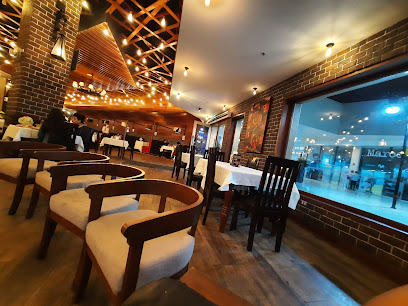
Bambú
Discover the flavors of Peru at Bambú in Trujillo - where delicious meets affordable in a cozy dining atmosphere.
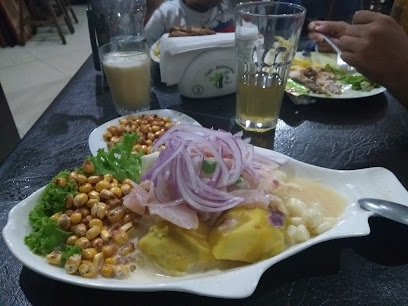
Al Dente Trattoria
Experience authentic Italian cuisine at Al Dente Trattoria in Trujillo's Historic Centre—where every dish tells a story.
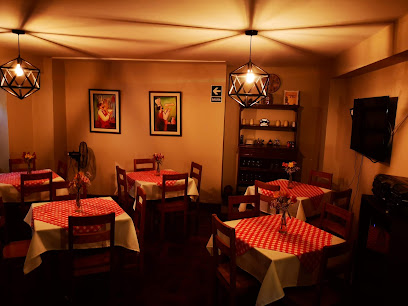
El Celler de Cler Restaurant
Experience exquisite Peruvian cuisine at El Celler de Cler in Trujillo—where tradition meets innovation in every dish.
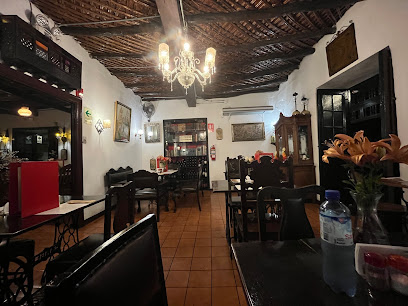
El Cristal
Discover El Cristal: A Culinary Gem in Trujillo Offering Authentic Peruvian Cuisine at Affordable Prices.
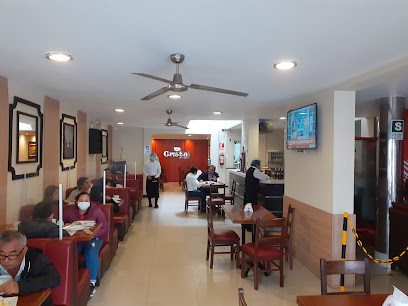
Restaurante Palermo's
Discover the rich flavors of Peru at Restaurante Palermo's in Trujillo – where every meal is a celebration of authentic cuisine.

La Casera Sanguchería
Experience authentic Peruvian flavors at La Casera Sanguchería in Trujillo – a delightful destination for sandwich lovers.
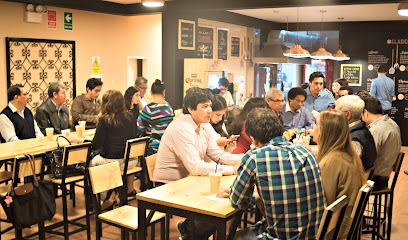
Vital Foods Centro Histórico
Discover delicious vegetarian dishes at Vital Foods Centro Histórico in Trujillo's vibrant Historic Centre.
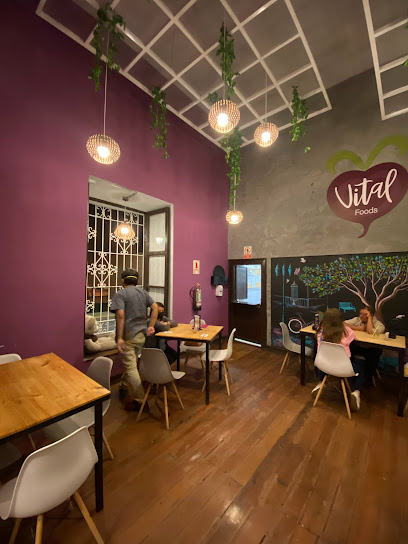
Chelsea Tavern
Experience the vibrant flavors of Trujillo at Chelsea Tavern, where local ingredients meet international culinary delights in a cozy atmosphere.
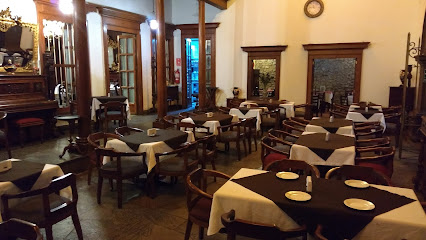
Restaurant Doña Betty
Discover the heart of Peruvian gastronomy at Restaurant Doña Betty in Trujillo - where tradition meets flavor in every dish.
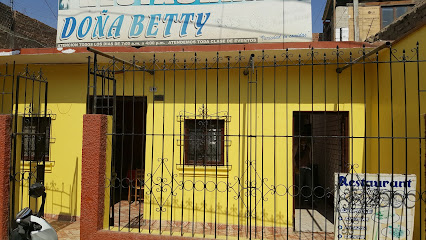
Markets, malls and hidden boutiques
Fly Boutique
Explore the best of Trujillo's fashion scene at Fly Boutique, where style meets local culture in a vibrant shopping experience.
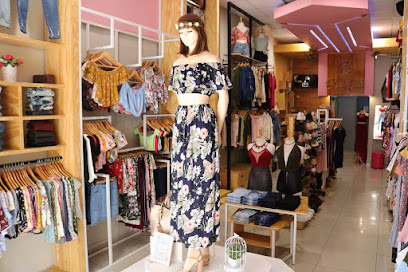
S&M boutique
Explore S&M Boutique in Trujillo for a unique selection of women’s fashion blending local culture and modern style.
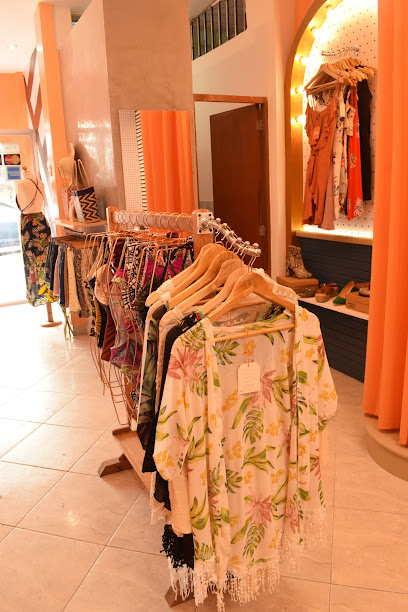
Ota Cos Anime Shop
Explore the vibrant world of anime at Ota Cos Anime Shop in Trujillo, where fans can find collectibles, apparel, and more from their favorite series.

TRENDY BOUTIQUE
Discover Trujillo's fashion scene at Trendy Boutique, where local artistry meets contemporary style in a charming shopping experience.
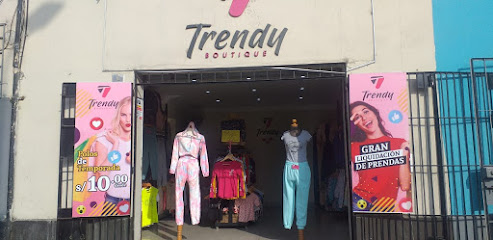
El Encanto Boutique
Discover unique handcrafted treasures at El Encanto Boutique in Trujillo, where local artistry meets sustainable fashion.

AMZUL STORE
Explore AMZUL STORE in Trujillo, where unique gifts and local craftsmanship come together to create unforgettable souvenirs.

LALHYSTORE
Explore LALHYSTORE in Trujillo for unique vintage clothing that embodies style, sustainability, and local culture.

Aquarela
Explore Aquarela in Trujillo for unique Peruvian gifts, showcasing handmade crafts that capture the essence of local culture.

Shop Details
Explore Shop Details in Trujillo for unique gifts and souvenirs that embody the spirit of Peru and its rich cultural heritage.
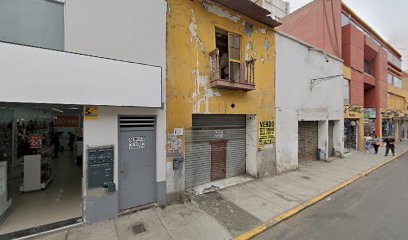
Teddy Shop
Explore the Teddy Shop in Trujillo for unique gifts and handcrafted teddy bears that embody the spirit of Peru.
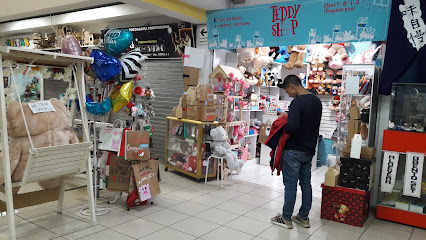
Mimossa Boutique
Explore Mimossa Boutique in Trujillo for unique women's fashion that blends modern style with local culture and craftsmanship.
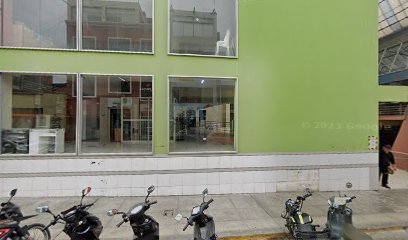
Yosis Boutique - Trujillo - Perú
Explore Yosis Boutique in Trujillo for trendy fashion choices that reflect local culture, making it a perfect stop for stylish tourists.
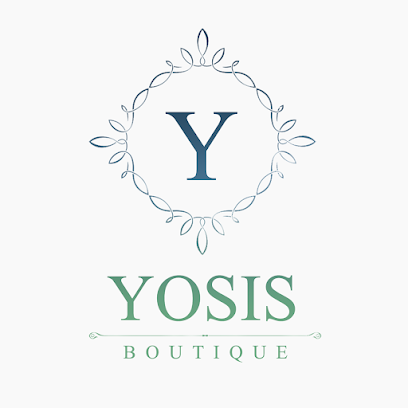
Vicio Pop! Store
Explore Vicio Pop! Store in Trujillo for unique gifts and local crafts that reflect the vibrant Peruvian culture.

Musas boutique Trujillo
Discover unique women's fashion at Musas Boutique in Trujillo - where local culture meets contemporary style.

Mar Shopping
Explore Mar Shopping in Trujillo for unique clothing and accessories that showcase local artistry and contemporary style.

Essential bars & hidden hideouts
Bar El Trasgu
Experience delicious grilled meats and vibrant atmosphere at Bar El Trasgu in Víctor Larco Herrera, a perfect spot for culinary enthusiasts.
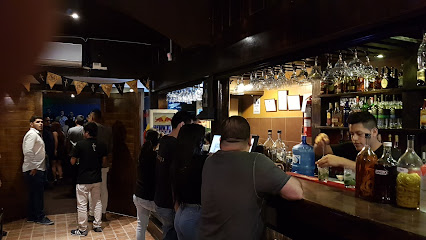
Brothers Bar
Discover Brothers Bar in Trujillo, a vibrant nightlife destination offering lively music, refreshing drinks, and an unforgettable atmosphere for all visitors.
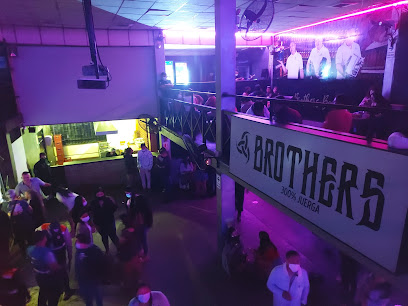
El Chino de Húsares
Experience the lively nightlife of Trujillo at El Chino de Húsares, where refreshing drinks and vibrant atmosphere await you.
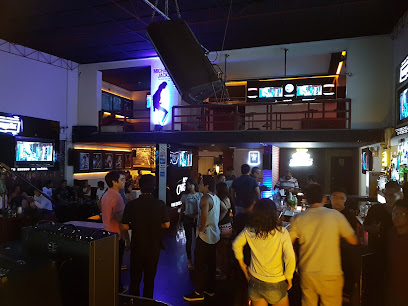
Boticario de Larco
Experience the vibrant nightlife at Boticario de Larco, where creative cocktails and a lively atmosphere await in Trujillo, Peru.
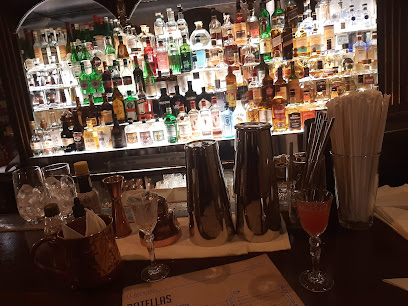
Matanga Pub
Discover the vibrant nightlife of Trujillo at Matanga Pub, where local culture meets lively entertainment and delicious drinks in a welcoming atmosphere.
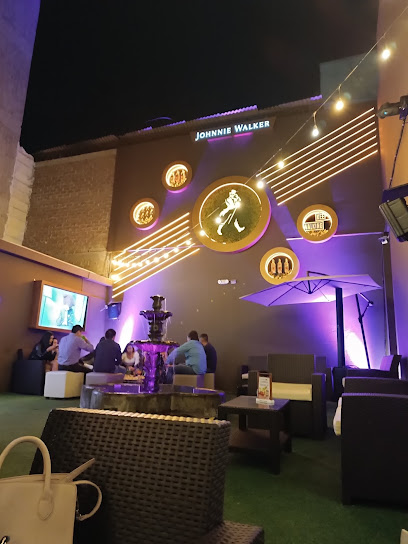
Bar Viejo de Viejos
Experience the lively spirit of Trujillo at Bar Viejo de Viejos, where exquisite Peruvian cuisine meets a vibrant nightlife atmosphere.
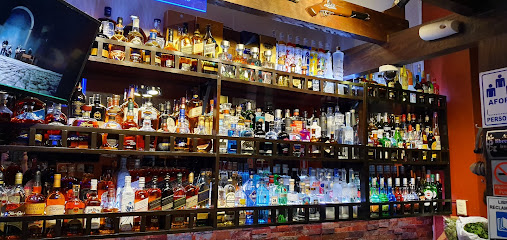
La Vieja Taberna
Discover an authentic nightlife experience at La Vieja Taberna, Trujillo's vibrant bar with a lively atmosphere, local drinks, and great music.
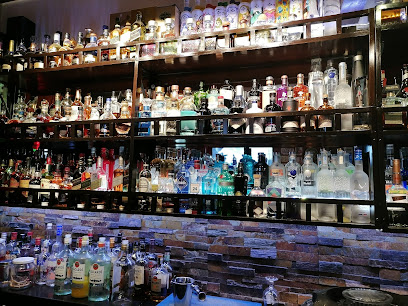
Panda Club - Bar
Discover the lively nightlife at Panda Club - Bar, a vibrant bar and disco club in Trujillo, perfect for cocktails and dancing until dawn.

Casa Blanca Restobar
Experience the vibrant flavors of Trujillo at Casa Blanca Restobar, a gastropub blending local cuisine with a lively bar atmosphere.
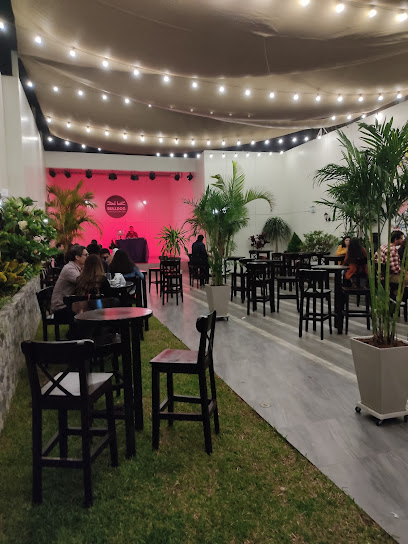
Larco Bar
Discover Larco Bar: A lively spot in Trujillo's Historic Centre, perfect for drinks, culture, and a taste of local nightlife.
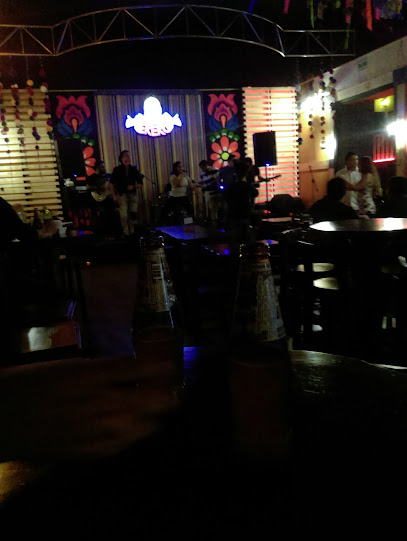
Walak Bar
Discover the vibrant nightlife at Walak Bar in Trujillo, where cocktails and good vibes await in a lively atmosphere.
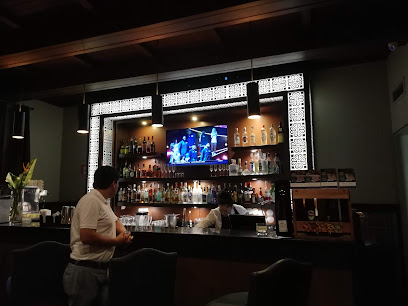
Break Bar
Discover Break Bar in Trujillo—where local flavors meet innovative cuisine in a vibrant gastropub atmosphere.
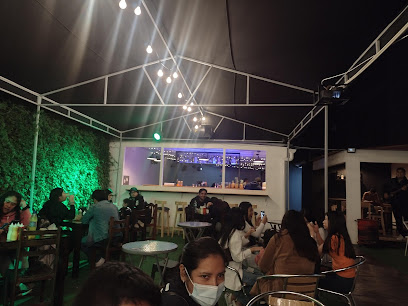
ONE LOUNGE
Experience the enchanting atmosphere of ONE LOUNGE, a sophisticated piano bar in Víctor Larco Herrera, perfect for cocktails and live music.
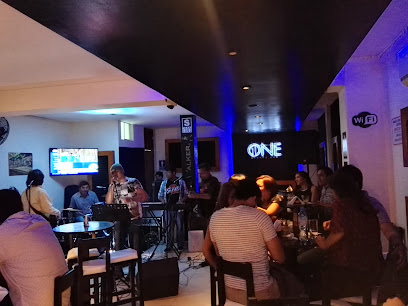
El Mariscal Bar
Discover the lively ambiance and exquisite cocktails at El Mariscal Bar in Trujillo, a must-visit for nightlife enthusiasts.
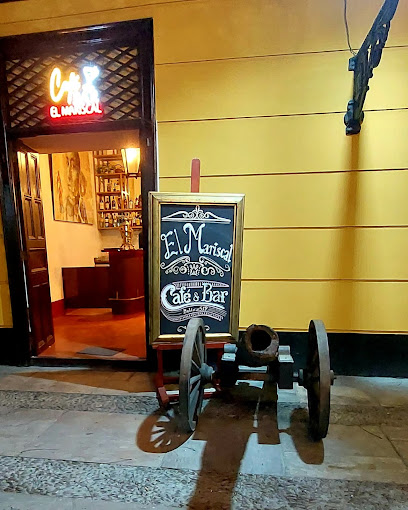
Legión restobar
Experience Trujillo's culinary scene at Legión Restobar, where local flavors meet innovative dining in a vibrant atmosphere.
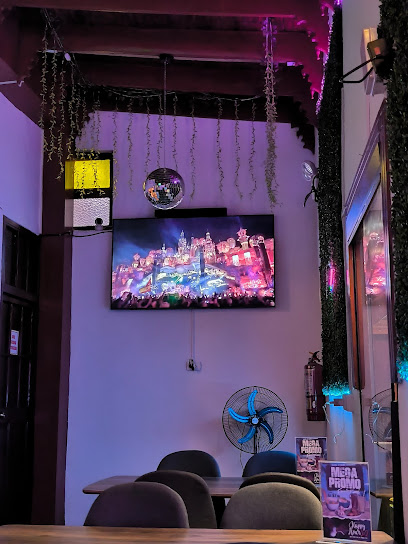
Local Phrases
-
- HelloHola
[oh-lah] - GoodbyeAdiós
[ah-dee-ohs] - YesSí
[see] - NoNo
[noh] - Please/You're welcomePor favor/De nada
[por fah-vohr/deh nah-dah] - Thank youGracias
[grah-see-ahs] - Excuse me/SorryPerdón/Lo siento
[pehr-dohn/loh see-ehn-toh] - How are you?¿Cómo estás?
[koh-moh ehs-tahs] - Fine. And you?Bien. ¿Y tú?
[bee-ehn. ee too] - Do you speak English?¿Hablas inglés?
[ah-blahs een-glehs] - I don't understandNo entiendo
[noh ehn-tee-ehn-doh]
- HelloHola
-
- I'd like to see the menu, pleaseMe gustaría ver el menú, por favor
[meh goos-tah-ree-ah behr ehl meh-noo, poor fah-vohr] - I don't eat meatNo como carne
[noh koh-moh kahr-neh] - Cheers!¡Salud!
[sah-lood] - I would like to pay, pleaseQuisiera pagar, por favor
[kee-see-eh-rah pah-gahr, poor fah-vohr]
- I'd like to see the menu, pleaseMe gustaría ver el menú, por favor
-
- Help!¡Ayuda!
[ah-yoo-dah] - Go away!¡Vete!
[veh-teh] - Call the Police!¡Llama a la policía!
[yah-mah ah lah poh-lee-see-ah] - Call a doctor!¡Llama a un doctor!
[yah-mah ah oon dohk-tohr] - I'm lostEstoy perdido
[ehs-toy pehr-dee-doh] - I'm illEstoy enfermo
[ehs-toy ehn-fehr-moh]
- Help!¡Ayuda!
-
- I'd like to buy...Me gustaría comprar...
[meh goos-tah-ree-ah kohm-prahr] - I'm just lookingSolo estoy mirando
[soh-loh ehs-toy mee-rahn-doh] - How much is it?¿Cuánto cuesta?
[kwan-toh kwehs-tah] - That's too expensiveEso es demasiado caro
[eh-soh ehs deh-mah-syah-doh kah-roh] - Can you lower the price?¿Puedes bajar el precio?
[pweh-dehs bah-hahr ehl preh-syoh]
- I'd like to buy...Me gustaría comprar...
-
- What time is it?¿Qué hora es?
[keh oh-rah ehs] - It's one o'clockEs la una
[ehs lah oo-nah] - Half past (10)Media (10)
[meh-dee-ah (deez)] - MorningMañana
[mah-nyah-nah] - AfternoonTarde
[tahr-deh] - EveningNoche
[noh-cheh] - YesterdayAyer
[ah-yehr] - TodayHoy
[oy] - TomorrowMañana
[mah-nyah-nah] - 1Uno
[oo-noh] - 2Dos
[dohs] - 3Tres
[trehs] - 4Cuatro
[kwah-troh] - 5Cinco
[seen-koh] - 6Seis
[seys] - 7Siete
[syeh-teh] - 8Ocho
[oh-choh] - 9Nueve
[nweh-veh] - 10Diez
[dyehs]
- What time is it?¿Qué hora es?
-
- Where's a/the...?¿Dónde está...?
[dohn-deh ehs-tah] - What's the address?¿Cuál es la dirección?
[kwal ehs lah dee-rehk-syohn] - Can you show me (on the map)?¿Puedes mostrarme (en el mapa)?
[pweh-dehs mohs-trar-meh (ehn ehl mah-pah)] - When's the next (bus)?¿Cuándo es el próximo (autobús)?
[kwan-doh ehs ehl prohk-see-moh (ow-toh-boos)] - A ticket (to ....)Un boleto (para ...)
[oon boh-leh-toh (pah-rah)]
- Where's a/the...?¿Dónde está...?
History of Trujillo
-
Trujillo, located on the northwestern coast of Peru, was founded on November 1534 by the Spanish conquistador Diego de Almagro. It was named after Trujillo in Spain, the birthplace of Francisco Pizarro. The city quickly became a strategic colonial outpost and played a significant role in the Spanish conquest of Peru.
-
Before the Spanish arrival, the area around Trujillo was dominated by the Chimú civilization, whose capital was Chan Chan. This ancient city, built around 850 AD, is the largest adobe city in the world and an impressive example of pre-Columbian urban planning. The Chimú were known for their advanced agricultural techniques and intricate metalwork.
-
In 1883, during the War of the Pacific, Trujillo was near the site of the Battle of Huamachuco. This was one of the last major conflicts between Peru and Chile, and it resulted in a significant defeat for the Peruvian forces. The battle had a lasting impact on the region and is a poignant reminder of Peru's turbulent history.
-
Trujillo's colonial-era architecture is a testament to its importance during the Spanish rule. The city's layout, with its central plaza and surrounding streets, is typical of Spanish colonial cities. Key landmarks include the Trujillo Cathedral, built in the 17th century, and numerous colonial mansions that showcase the ornate styles of the period.
-
Trujillo is known as the 'Capital of the Marinera,' a traditional Peruvian dance characterized by its graceful movements and elaborate costumes. The city hosts the annual National Marinera Festival, attracting participants from all over the country. This dance is a vital part of Trujillo's cultural identity and a symbol of its rich artistic heritage.
-
These two massive pyramids, built by the Moche civilization between the 1st and 8th centuries AD, are located just outside Trujillo. Huaca del Sol was a political and administrative center, while Huaca de la Luna served ceremonial purposes. The site is renowned for its intricate murals and provides valuable insights into the Moche culture.
-
Following Peru's independence from Spain in 1821, Trujillo played a crucial role in the early years of the republic. The city was an important center for political and economic activity, contributing significantly to the development of the northern region of Peru. The legacy of this era is still visible in Trujillo's architecture and urban planning.
-
Celebrated every October, the Trujillo Spring Festival is one of the city's most anticipated events. It features parades, beauty contests, and cultural exhibitions. This festival not only marks the arrival of spring but also highlights the city's vibrant community spirit and enduring traditions.
Trujillo Essentials
-
Trujillo is accessible via the Cap. FAP Carlos Martínez de Pinillos International Airport (TRU), located about 10 kilometers from the city center. Direct flights from Lima take approximately 1.5 hours. From the airport, you can take a taxi or arrange for a shuttle service to your accommodation. Alternatively, long-distance buses from Lima and other major cities in Peru also provide a comfortable and scenic way to reach Trujillo.
-
In Trujillo, taxis and ridesharing services such as Uber are readily available and are the most convenient options for getting around the city. Public buses and minibuses (combis) operate on various routes and are an affordable way to travel, though they can be crowded. Renting a car is also an option if you plan to explore the surrounding areas, but be aware of local driving conditions and traffic.
-
The official currency in Peru is the Peruvian Sol (PEN). Credit cards are widely accepted in hotels, restaurants, and larger shops in Trujillo, but it's advisable to carry cash for smaller establishments and markets. ATMs are widely available throughout the city, but it is wise to inform your bank of your travel plans to avoid any issues with card transactions.
-
Trujillo is generally safe for tourists, but it's important to take standard precautions. Avoid walking alone at night, especially in less populated areas. Be cautious in neighborhoods like El Porvenir and La Esperanza, which have higher crime rates. Keep your belongings secure and be mindful of your surroundings in crowded places to avoid pickpocketing.
-
In case of an emergency, dial 105 for police assistance, 116 for fire services, and 106 for medical emergencies. Trujillo has several hospitals and clinics that provide medical care. It's advisable to have travel insurance that covers health emergencies. For minor health issues, pharmacies are available throughout the city, offering a range of over-the-counter medications.
-
Fashion: Do dress modestly and comfortably. Light, breathable fabrics are recommended due to the warm climate. Avoid wearing flashy jewelry. Religion: Do respect local religious customs. When visiting churches, dress conservatively and remove hats. Public Transport: Do be polite and offer seats to elderly or pregnant passengers. Keep your belongings close to you. Greetings: Do greet people with a handshake. A friendly 'hola' (hello) is common. Eating & Drinking: Do try local dishes like ceviche and cabrito. Accept food and drink offerings graciously. Don't refuse hospitality, as it can be considered impolite.
-
To experience Trujillo like a local, visit the vibrant Mercado Central to shop for fresh produce and local crafts. Attend a traditional Marinera dance performance to immerse yourself in the local culture. Don't miss exploring the archaeological sites of Chan Chan and Huaca de la Luna. For a unique dining experience, try the local picanterías, which serve traditional Peruvian dishes in a casual setting.
Trending Landmark in Trujillo
-
Plaza de Armas of Trujillo
-
Plazuela El Recreo
-
Chan Chan
-
La Huaca de la Luna
-
Chan Chan Site Museum
-
Archeological complex El Brujo
-
La Huaca del Sol
-
Trujillo Toy Museum
-
Museo Huacas de Moche
-
Trujillo Cathedral Basilica
-
Trujillo Peru Temple
-
Juan Valdez Trujillo
-
Old Wall Trujillo
-
Casa Urquiaga
-
Museo Jardín de Los Sentidos
Nearby Cities to Trujillo
-
Things To Do in Chiclayo
-
Things To Do in Huaraz
-
Things To Do in Piura
-
Things To Do in Loja
-
Things To Do in Lima
-
Things To Do in Cuenca
-
Things To Do in Huancayo
-
Things To Do in Macas
-
Things To Do in Guayaquil
-
Things To Do in Salinas
-
Things To Do in Ica
-
Things To Do in Ambato
-
Things To Do in Ayacucho
-
Things To Do in Iquitos
-
Things To Do in Tena















